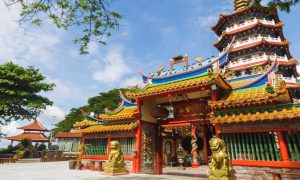The little boy looked at his mother, nonplussed. “What did you say?” he asked. His mum replied, “You heard me. Put the toothpaste back in the tube.” She had squeezed out a generous blob of toothpaste in the basin and then asked the boy to put it back in its tube – a near-impossible task – all to teach a life lesson to the youngster.
This was one of the stories from my own childhood that stuck with me. The lesson was that, no matter what you do after the fact, sometimes things you say can’t be unsaid. Sometimes things you do can’t be fixed with an apology. Once it’s done and “out there,” it just can’t be put back in the tube. Things can’t be made fully right.
That’s kind of how I feel about KL’s woeful traffic system. Malaysia is, at last, taking some fairly serious steps to address a very real problem, but to a degree, the damage has been done. The toothpaste is out of the tube. KL’s road network is a mess and it probably is beyond being meaningfully fixed.
However, that’s not to say it can’t be improved, and there are small hints that those with the power to make things happen around here might be recognizing that you don’t necessarily have to totally fix something in order to make it better.
For example, after living here for a couple of years, it dawned on me that some of the most serious contributors to the crush of ferocious traffic were the devices ostensibly there to manage its flow in the first place: traffic lights. Too often, a light will stay red near-interminably, allowing a huge number of cars and motorbikes to pile up, waiting for the change. When the light changes, it likewise stays green for too long, permitting an onslaught of traffic to pour onto the adjacent street, often overwhelming its capacity. Traffic isn’t metered, nor is it controlled. Simplyretiming traffic lights citywide could result in a significant improvement.
I am no traffic engineer, nor am I even particularly knowledgeable about it. But such experts do exist. There are civil engineers who specialize in traffic planning and management. There are equations to determine road capacity and create “road hierarchies.” There are on-ramp meters that limit the rate at which cars can enter a highway. All of these things exist; Malaysia just has to take the initiative to ask for help. Bring consultants in and make some changes. Because of poor planning, inadequate public transit, the predictable surge in car ownership that accompanies a country’s increasing affluence, and – let’s face it – a complete lack of direction when it comes to building roads, KL actually has the traffic woes of a much larger city. (The driving habits of Malaysians, I’m sorry to say, do nothing to help.) The serious traffic problems were identified over a decade ago, yet little seems to have been done.
I rarely (if ever) advocate Malaysia looking solely to the West for solutions, but in this case, perhaps it makes sense. Highly developed nations have already been dealing with traffic management for decades. Why not tap into that knowledge? Cities like Chicago, Sydney, London, and Berlin – they’ve all spent millions finding solutions that work. Or maybe look to Tokyo and Seoul. They surely know a thing or two about traffic! Will KL end up a city in near-perpetual gridlock? Will its residents tolerate four hours a day of round-trip commuting? Malaysia’s outsized excise duties on cars are set to be reduced significantly in the coming years, which will only encourage higher rates of car ownership. The population of greater KL is also expected to swell to 10 million in the next decade. This does not bode well for the prospect of improving traffic conditions!
Encouragingly, the government’s transformation programmes do spell out some meaningful changes to help address the problem, and there can be little doubt that the long-overdue MRT expansion will bring some relief to the city’s congested roadways. But the reality is, the system cannot be wholly fixed any more than the toothpaste can be put back into the tube. These problems should have been addressed 20 years ago. Now it’s too late, and the notion of KL ever having a logical, hierarchical network of roads or a Singapore-like MRT system is little more than a dream.
To me, though, that makes the slow and expensive efforts we see taking place all the more impressive. It would be easy for Malaysia to throw up its hands and just letthings continue to deteriorate. But they are trying to make improvements in a complex system that could easily overwhelm. It doesn’t always work, to be frank, and I do wish they’d bring in a team of experts from developed countries to help. Nevertheless, it’s still good to see the effort, though I have to remind myself of that when I’m crawling along in one of the city’s “any time, any place” jams.
Recently, I was telling one of my local friends about the advent of self-driving cars in the US. Some states have already legalized them, so advanced is the technology. It will likely be somewhat commonplace for the next generation to see these cars that drive themselves. My Malaysian friend glumly lamented, “We’ll never have such a thing here.” Part of me thinks maybe he’s right, but then, I think that a place like Malaysia might be the perfect place for such technology. I often think that the drivers here are at least half the problem, so maybe if they let computers handle the driving, we might get some of that toothpaste back in the tube, after all!
———————————————————————————————————
Source: The Expat July 2013
What are your thoughts on this article? Let us know by commenting below.No registration needed.
















